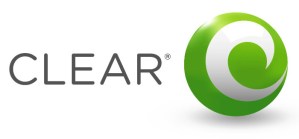
WiMax operator ClearWire has revealed its financial results for the first quarter of 2011, and while the company is still struggling, there are some bright spots on its horizon. Clearwire says it added 1.8 million subscribers during the quarter, with 1.6 million of those coming through wholesale partners like Sprint. Those numbers added up to revenue of over $258 million for the quarter, although Clearwire still managed to chalk up a $227 million loss for the quarter. However, the company’s recent $1 billion wholesale agreement with Sprint puts the company on sounder financial ground—and their 4G network now reaches some 126 million people compared to just 41 million a year ago.
“During the quarter we made good progress toward our objective of achieving positive EBITDA [Earnings Before Interest, Taxes, Depreciation, and Amortization] in 2012 by executing new agreements with Sprint, delivering strong post-pay subscriber growth and company-best wholesale revenue growth, as well as significantly lowering our operating costs,” said Clearwire chairman and interim CEO John Stanton, in a statement.
The current quarter has seen a good deal of drama for the 4G operator: CEO Bill Morrow stepped down unexpectedly in early March, leaving former VoiceStream and Western Wireless head John Stanton to take the reigns while the company searches for a new leader. The company is also facing a lawsuit from angry customers who claim Clearwire knowingly oversold its services, signing up customers it knew were outside its effective coverage areas and then charging them early termination fees when they were dissatisfied with Clearwire service. However, Stanton’s time at the helm of the company has cleared one major dark cloud from Clearwire’s future: mobile operator Sprint will be paying Clearwire $1 billion in wholesale fees to offer 4G WiMax services to Sprint customers—Sprint is Clearwire’s biggest customer (and investor), and the cash infusion means Clearwire won’t have to resort to more desperate cost-cutting measures in order to keep operating. Six months ago, there was very real concern Clearwire wouldn’t be able to continue operating beyond mid-2011.
Clearwire says it ended the first quarter of 2011 with 6.15 million subscribers, a 533 percent increase from the 971,000 subscribers it had a year ago. The bulk of those (some 4.86 million) come by way of wholesale partners (namely Sprint) rather than Clearwire’s own retail offerings, and the bulk of the wholesale subscribers use mixed-mode devices that drop back to 3G services when Clearwire 4G isn’t available.
Clearwire now forecasts it will conclude 2011 with about 9.5 million subscribers, with the bulk of those coming through wholesale partners; the company previously forecast ending the year with 8.6 million subscribers. However, while the company expects to spend less than $400 million in capital expenditures this year and will continue to work on improving efficiency and cash flow, Clearwire doesn’t expect to achieve a positive balance sheet until 2012.


